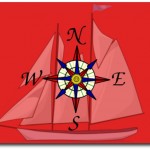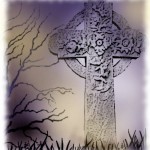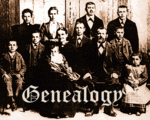General Tips
New Family Tree Site Offers a Great Deal
August 19, 2012 by ramona
Filed under Articles, General Tips, Latest News
 Genealogy beginners in the US will be happy to learn that findmypast has launched a new search site tailored to family history hunters across the pond.
Genealogy beginners in the US will be happy to learn that findmypast has launched a new search site tailored to family history hunters across the pond.
The new site titled findmypast.com is geared towards helping the descendants of UK immigrants conduct family tree research with records specifically tailored for US Family History researchers.
The records can be searched by:
- Census, Land and Substitutes
- Churches and Religion
- Education and work
- Immigration and Travel
- Institutes and Organizations
- Military Service and Conflict
- Newspapers, Directories and Social History
- Vital Records (Birth, Marriage, Death)
In addition to the US records, subscribers will have access to records from the UK, Ireland, Australia and New Zealand.
The best part is that right now findmypast.com is offering a limited time 76% Pioneer discount!
Gaming for Ancestors
August 7, 2012 by ramona
Filed under Articles, Family History, General Tips, Latest News, Preserving Your Family Tree
 If you are looking for a fun and unusual way to record your family tree you might want to consider playing Family Village.
If you are looking for a fun and unusual way to record your family tree you might want to consider playing Family Village.
Family Village is a facebook game that allows family history hunters to build a family tree in game format. The premise of the game is to invite relatives to play and create a database of ancestors along with living family members by entering their information into the game.
How Does this Create a Database of Ancestors?
The game allows you to go on quests and build a village by entering all the usual types of genealogical information about your ancestors such as birth, marriage and death documents and photos. It allows you to enter immigration information, maps and newspaper articles as well as adding occupations. You can even build avatars of your ancestors.
In their vision statement game developer Finium says that their purpose in developing the game is to provide meaningful games that will aid family tree hunters in preserving their family history.
Family Village is a great way to connect with relatives and get the whole family involved in genealogy.
Find a Grave: Free Family Tree Resource
July 5, 2012 by ramona
Filed under Articles, Genealogy Research Resources, General Tips, Latest News, Sharing Genealogy Information
 Find a Grave is a FREE genealogical resource that every genealogy beginner should visit and bookmark today.
Find a Grave is a FREE genealogical resource that every genealogy beginner should visit and bookmark today.
Founded in 1995 by Jim Tipton, a self-proclaimed nerd with the odd hobby of searching out and visiting the grave sites of the famous; Tipton’s goal in the creation of the site was to share his interest with like-minded others.
It was not long before he came to the realization that his hobby had great historical and genealogical significance.
What Does Find a Grave Contain?
Filled with memorials this virtual cemetery has listings for:
- North America (by province and state)
- South America
- Europe
- Asia
- Australia and Oceana
- Africa
Not to be forgotten is the “Famous Graves” section that has a comprehensive search field that allows for numerous search types.
It also has some fun categories such as:
Yearly Necrologies: listings of individuals who died during specific times
Posthumous Reunions: a page that lists movies and TV shows with cast members who have passed away. For example when I clicked on the TV show Star Trek, it listed 46 cast members (both guest starts and original crew). For each listing, it gave the date and place of birth and death, a biography that contained many details, cause of death, place of burial and special details.
Interesting Epitaphs: This category is self explanatory and indeed does contain some very interesting epitaphs.
Is it Worth My Time?
The best way to tackle this question is by giving it a test run. For this purpose, I will use three of my ancestors, one from the US, one from Canada and one from Scotland using the broadest search category…surname search.
- U. S. – Undseth: This search did not return any direct line ancestors, however there were a few cousins listed.
- Canada – McCallum: This search found several of my ancestors graves listed in three provinces.
- Scotland – Sinclair: This Search was the most successful and returned numerous family lines from the Orkney Islands.
Find a Grave is most definitely worth your time. In fact, you could easily spend hours and hours searching through the site for burial records to flesh out your family history.
How do I Join?
Joining is easy; simply fill out the online registration and you can immediately begin searching for your ancestors.
Find a Grave is a true genealogy treasure that allows you to not only search for your ancestors but also to contribute to the already huge database. Before you get started, be sure to download your complementary Cemetery Visit Tracking Form available with your free 30-day trail membership to Genealogy Beginner.
Genealogy TV Favorites
February 14, 2012 by ramona
Filed under Articles, Genealogy Research Resources, General Tips, Latest News, Sharing Genealogy Information
 With the new season of NBC’s Who Do You Think You Are now regularly scheduled for Friday nights 7/8c and the BBC program Finding Your Roots set to air on March 25, it may seem that genealogy addicts would be getting their family history fix.
With the new season of NBC’s Who Do You Think You Are now regularly scheduled for Friday nights 7/8c and the BBC program Finding Your Roots set to air on March 25, it may seem that genealogy addicts would be getting their family history fix.
However, if you just cannot get enough, there are a number of excellent programs that will help tide you over. Some of them may be your old favorites, while you can enjoy others as new-to-you.
Genealogy TV Timeline
Genealogy TV may have gained fame with the Who Do You Think You Are franchise but it was not the first of its kind. From genealogy TV’s beginnings genealogy beginner plots a timeline of genealogy viewing pleasure.
History Detectives – PBS: Premier 2003
History Detectives a PBS documentary series had a unique approach to genealogy. The show centered on solving the mysteries of family heirlooms and historic objects through family history and genealogy.
Who Do You Think You Are – BBC: Premier 2004
The first of the WDYTYA franchise began with the British version and was a huge success right from the start. Expanding to produce shows for Canadian (2007), Australian (2008), Irish (2008) and US (2010) audiences, it is still going strong.
Ancestors in the Attic – History Channel: Premier 2006
History Channel had its contribution to Family Tree broadcasting with the unforgettable Canadian program Ancestors in the Attic. The premise of this series follows a team of genealogists as they use traditional research techniques combined with genealogy DNA research to present an entertaining picture of genealogist as detectives.
Coming Home – BBC: Premier 2007
Coming home is a charming program that focuses on Welsh genealogy. Produced by BBC Wales it follows a similar format to Who Do You Think You Are. Each episode features a celebrity in search of their Welsh roots.
The Genealogy Roadshow – RTE One: Premier 2011
A four part Irish Genealogy TV series airs on RTE One. This program follows a fun format much like Antiques Roadshow. The Ancestor hunters of the Genealogy Road Show travel Ireland solving family history mysteries.
Faces of America – PBS: Premier 2010
Faces of America the four part series hosted by professor Henry Louis Gates is another enjoyable PBS program. Faces of America combines DNA testing with genealogy research to delve into the family trees of celebrities.
The great news is that you do not have to wait a week to watch more genealogy TV as episodes of for these must watch shows are available now…online free. Join us on the Coffee Shop Forum for links.
Image Credit: FrankAllan via Photobucket
What is a Resident Genealogist?
February 10, 2012 by ramona
Filed under Articles, General Tips, Getting Started in Genealogy, Introduction to Genealogy, Latest News
 A resident genealogist is a professional on staff at a library, archives or even on a genealogy website who is there to provide family tree research advice and guidance, particularly to genealogy beginners. A quick question to the resident genealogist may save you time as well as a great deal of frustration and it can be a lot of fun.
A resident genealogist is a professional on staff at a library, archives or even on a genealogy website who is there to provide family tree research advice and guidance, particularly to genealogy beginners. A quick question to the resident genealogist may save you time as well as a great deal of frustration and it can be a lot of fun.
If nothing else your Genealogist in Residence is almost certainly, part detective and part historian. A website with a resident genealogist is showing you how much they care about you, their members and how important it is to them to help you in every way they can.
What Does a Resident Genealogist Do?
A resident genealogist:
- Searches out new genealogy resources
- Provides educational materials
- Writes articles about genealogy
- Answers questions about family tree research
- Can help genealogy beginners to understand genealogical documents
- Provides tips and inspiration to keep you motivated
The primary duty of a resident genealogist is to help you learn to conduct your own genealogy research.
How can a Resident Genealogist Help Me?
When you have hit a brick wall a resident genealogist can help you find more resources or make suggestions on where to look next. If you are having a difficult time understanding your ancestor’s birth, marriage or death certificate, a resident genealogist is always happy to help. Any problem you come across is like candy to a resident genealogist, so do not be shy about asking.
What Kind of Questions can I ask?
You can ask any questions you need; no question is too big or too small. When asking your question include the details, give the names dates and places of the ancestor you need help with. State why reading a particular document is a problem, is the writing is too faded or messy. Want to know what a third cousin twice removed is or what all those numbers on a Family Tree form mean…just ask!
Genealogy Beginner encourages you to go to our resident genealogist with your questions. You can usually find her on the Ask a Genealogist forum or on our Facebook page.
Image Credit: dbickert via Photobucket
Writing Your Family History Book
January 28, 2012 by ramona
Filed under Articles, Family History, General Tips, Latest News, Lesson 3 Articles, Preserving Your Family Tree
 Early in January Genealogy Beginner asked our facebook friends what exciting genealogy projects you had planned for 2012. Top among your answers were writing and publishing a family history book.
Early in January Genealogy Beginner asked our facebook friends what exciting genealogy projects you had planned for 2012. Top among your answers were writing and publishing a family history book.
Genealogy Beginner thinks that is an excellent goal. To help support you in reaching it we decided to dedicate some time to providing information that will bring you closer to achieving it.
Getting Started on Your Family History Book?
Perhaps the hardest thing about writing a family history book is simply getting started. Your first step should be to decide who your family history book is for? Knowing this will help you resolve what form your family history book will take.
- Will it be a surname book, a book for yourself, are you planning it as a gift for other family members or did you want to offer it more publicly?
- Will it trace the line of a single family or are there going to be interconnecting trees?
- Do you have a set number of generations you wish to include?
- Are you dedicating it to a single ancestor?
- Will you be including graphic data such as family photographs and scans of source documents?
- Will you be collaborating with another family member?
- Will you be including stories, family lore or famous family recipes?
With the above questions answered, you will have a better idea of the type of book you want to write.
Memoire: An account of the personal histories based on the memory of the author.
Biography: A focus on one specific ancestor.
Narrative: The story of a group of ancestors or a complete family line.
Knowing the answers to these questions before you begin will help you with organizing the project. More importantly, it will keep you from becoming overwhelmed and make your project run smoothly from start to publish.
Note: Genealogy Beginner suggests, that you begin to write your book before your research is complete; for the reason that, if you are like most other genealogy researchers…your research will never be finished.
Organizing your Family History Book
Once you have settled on the form your book will take, the next logical step will be to organize your collected data. You can take several approaches to this process.
Step one:
Organize within the chronological order of your family tree beginning with the current generation. On the other hand, you may want to begin with the earliest generation you have found and work your way back to the current generation. Working in chronological order will help work through any holes you may have in your research.
Step Two:
Write a tentative outline for your story. You can include as much or as little detail as you wish, the point to remember here is to remain flexible, as you are likely to do a lot of editing along the way.
Step Three:
When you have decided on your organizational process, begin making files for each of your subjects. For instance, a master file for each family group and sub files for the individuals within the group.
Each sub file should contain:
- Cards, letters, photos, newspaper clippings and other memorabilia for that individual
- Notes on interviews
- Notes on social history (What was life like in their time, were there any historical events taking place near them etc.)
Write Your Family’s Story
Here are some basic writing tips to help get you started and keep you going.
Draw up a writing schedule
Life gets busy and when it does, it is easy to put off your project. Drawing up a writing schedule and sticking with it will help you keep your project from being placed on the back burner.
Write a Draft
All writers know that every story has a beginning, middle and end. When you begin to write, start with a draft that outlines this. Do not worry about grammar and punctuation at this point just get your outline down on paper. Later as you start your rewrite, you can make corrections and begin to include detail. Final corrections can be made when you edit.
Final Notes:
Some family members may be more private while others may simply feel strongly that some stories ought to be omitted altogether. For these reasons, the following two points should be well remembered when writing your family history.
- Be careful about including any stories that could be upsetting to your family.
- When writing your family history book keep detailed information about living ancestors out of it, unless you have their written permission to include it.
Once you have finished writing your story and before you publish, it is time to edit. Join us on the forum Genealogy in General for your final edit checklist. Don’t forget to check back with us next week for Genealogy Beginners article on publishing your family history book.
Image Credit : roonil_waslib via photobucket
Using Google Scholar for Genealogy
January 23, 2012 by ramona
Filed under Articles, Genealogy Technology, General Tips, Introduction to Genealogy, Latest News
 Among the many tools available to genealogy researchers, one that beginning genealogists may not be as familiar with is Google Scholar. Although this wonderful tool is not likely to lead you to any major records databases, it can however direct you towards relevant-to-you information sources for your family tree research.
Among the many tools available to genealogy researchers, one that beginning genealogists may not be as familiar with is Google Scholar. Although this wonderful tool is not likely to lead you to any major records databases, it can however direct you towards relevant-to-you information sources for your family tree research.
Using Google Scholar will also save you a good deal of time. Time you may otherwise spend sifting through millions of hits from common search engine queries.
Google Scholar for Genealogy
Google scholar is a tool that will let you conduct a broad search of scholarly materials possibly containing information on your ancestors.
Google Scholar provides a scholarly listing of:
To give you a better idea of what you may actually find by using Google Scholar as a search source lets first look at one of my ancestors, Marin Boucher. Then try it again with your own research interests.
I know that Marin Boucher was an early settler in New France (what is now modern day Quebec Canada). I can find a great deal of record sources for him through online databases. However, using Google Scholar may lead me to look for additional information I may not otherwise find or even consider.
To find Google Scholar:
You should now be on the Google Scholar, search page.
To get best results with Google Scholar it is best to conduct a narrow search by typing “Marin Boucher” into the search bar including the quotation marks. You will get a good list of hits; however, most of them will be in French.
If you do not speak or read French, You can opt for “Search for English results only” at the top left corner of the page or use the Google Translate tool to read any information you find.
Looking down the list of hits, you will notice that some of them are underlined. The underlined returns will take you to an information source. If you are lucky, the source will be a free online book. Some of the returns (not underlined) will be citations or additional sources such as related articles, PDF documents or directories.
For Marin Boucher we find all of these information types. Because they are all in French, I have used Google Translate before listing a few of them here.
Book:
[BOOK] A Canadian parish in the seventeenth century
[HTML] from google.ca
HR Casgrain – 1880 – books.google.com
… who was buried in the church. Her neighbor, Jean Galleran Boucher, was a family
native of Mortagne. His father. Marin Boucher is one of the oldest settlers
of New France. In the year 1625, it is found …
Cited by 8 – Related articles – Find in AMICUS
PDF Document:
Citation:
[QUOTE] Marin Boucher in Canada: direct descent
Genealogical Society Lanaudière … – 1997 – Genealogical Society …
Find in AMICUS
Related Article:
Related Article and PDF Document:
[QUOTE] Marin Boucher in Canada: direct descent
Genealogical Society Lanaudière … – 1997 – Genealogical Society …
Find in [PDF] “The French-speaking Quebec from 1608 to 1960”
[PDF] from banq.qc.ca
H Charbonneau – The population of Quebec from yesterday to tomorrow, …, 1991 – bibnum2.banq.qc.ca… Jean Guyon (Dion) and Mathurin Robin, Zacharie Cloutier and Sainte Dupont, Jacques Archambault and Françoise Tourault, Marin Boucher, Noel Lee, Abraham Martin, Pierre Miville, that some of the founders of the most cele-bers, the strain that we …Related articles – View as HTML – All 2 versions
From this short list, you can see that I have found several sources of information on my ancestor including:
- A book that is available free on Google Books
- A citation that will lead me to additional information
- A related article available in PDF
There were far more returns than those listed here and although I would likely have come up with these leads with a common Google search it would have taken me far longer to sift through the Google hits to find the most relevant.
Genealogy Beginner encourages you to try using Google Scholar for your family tree research. Additionally, we would love to hear your Google Scholar success stories; share with us and other beginning genealogists on the Discovery Panel forum.
Genealogy Beginner’s French Canadian Genealogy Tips
November 26, 2011 by ramona
Filed under Articles, Genealogy for Beginners, General Tips, Getting Started in Genealogy, Introduction to Genealogy, Latest News, Lesson 7 Articles
 The genealogy of Upper Canada and/or French Canadian genealogy are amongst the most difficult spheres of ancestral research. This is true not only for the genealogy beginner but also for professional genealogists. Although this area may have some of the best preserved and indexed records in the world it is also one of the most confusing to investigate. This is true for several reasons, most of them being due to historic and multi-cultural influences such as language and the cultural influences of Acadian and Métis ancestry, all of which makes researching French Canadian roots so exceptional and unique.
The genealogy of Upper Canada and/or French Canadian genealogy are amongst the most difficult spheres of ancestral research. This is true not only for the genealogy beginner but also for professional genealogists. Although this area may have some of the best preserved and indexed records in the world it is also one of the most confusing to investigate. This is true for several reasons, most of them being due to historic and multi-cultural influences such as language and the cultural influences of Acadian and Métis ancestry, all of which makes researching French Canadian roots so exceptional and unique.
The basics of genealogy research in Quebec begins with vital records, however searching for these records requires search strategies more in tune with European genealogical research methods. Before the first of January 1994 there were no civil registrations of births, marriages and burials, these records were the sole dominion of the church.
Church Records
Churches in Quebec were required by law to keep two copies of their registers, one for the church and another that was kept for the district protonotary (chief clerk at the regional courthouse). The registers were turned in to the protonotary once per year and that, for several years, is as close as Quebec came to having a civil register. It was not until 1927 that municipalities gained the right to record births; however, the records seem to indicate that the people preferred the church. To complicate matters further, civil marriages, in fact, any marriage outside of the Catholic Church was not recognized before 1960. An interesting aside to this is that church marriage records are still considered a legal document in the province of Quebec. In 1994 the government of Quebec took over the responsibility for registering all vital events and at that time records of registrations over 100 years old were moved from the district protonotaries to a national archives.
Tips for French Canadian research
With this in mind it is easy to understand why searching for your French Canadian roots can be a confusing prospect. It does help to know what to look for, or perhaps what to look out for would be a better description. Here are some things to keep in mind while working your way through Quebec vital records.
Civil and church records may have discrepancies in information, although the dates are seldom in conflict. Also if you do not find what you are looking for in one set of records check the other set as sometimes the dual documentation policy was not always strictly followed. Although this is rare it does happen, consequently it is worth checking both sets of records.
About Protestant records
Following the British conquest of Quebec up to the late 1820’s the Anglican Church was the only Protestant religion that was legally entitled to keep civil registers, with the exception of a small number located on the Isle of Montreal. Despite this, some Protestant churches still performed marriages, baptisms and burials. For these records you will need to check with the church archives. In 1804 protestant marriages were legalized.
Before the war of 1812 protestant ministers from the states of Vermont, New York and New Hampshire would visit as missionary circuit riders conducting marriages, baptisms and burial services. It is probable that they took their registers with them when they left. This is a good clue on where to look if you have not been able to find records where you expected to find them. An interesting note in this area is that Catholic missionaries would also travel to Vermont and these records were brought back to Quebec.
Illegitimacy was considered a great disgrace within the protestant faith; this resulted in a failure to baptize illegitimate children. Although not conclusive, this is something to take into account if you have covered all other bases and still can not find a record for your generations past.
Catholic records
- French Canadian Catholic records are filled with little quirks, dates are written down in their full form such as One thousand seven hundred and thirty one for 1731.
- Women were listed with their maiden names; take that into consideration when searching indexes.
- Pay attention to the names of witnesses and godparents in the registers as it was common for them to be close family members.
- Notes in the margins of the record can give additional information.
- Illegitimate children within the Catholic Church were often noted as “inconnuu”, for example an illegitimate child may be written down as Francios Inconnu or Genevieve Inconnu. These children will often be found in the census with their family so use that resource to cross reference with an entry of “inconnu”.
Important Collections
Here is a tip that may save you a great deal of time with your French Canadian research. Check the Tanquay Collection; Dictionnaire Genealogique des Familles Canadiennes. (Genealogical Dictionary of Canadian Families from the Founding of the Colony to Our Time) The Tanquay Collection is the work of father Cyprien Tanquay a notable early Canadian genealogist who researched and recorded the origins and family lines of early Canadian colonists. The Collection may have a good deal of your family tree already researched. In it you will find individuals listed with an easy to follow Roman numeral system that lets you know immediately if there are deeper roots in your family tree. Using this collection in tandem with the Drouin Collection (The repository of Quebec Vital and Church records) and the Canadian Census Collection for Quebec will eliminate a great deal of frustration.
Language
One other slightly intimidating obstacle to French Canadian genealogy is that the records are written in French. Do not let this scare you away there is a simple formula that you can follow even if you do not speak a single word of French.
Dit names
Lastly, educate yourself about dit names. A dit name is the name that was used to differentiate one family of a common surname from another. Some of the older families may have several dit names. This is important information because when you are tracing back; the predecessor of the ancestor you are researching may be listed under a different last name. For example if you were researching Michel Simon you may find his father listed as Francois Leonard or Francois Simon dit Leonard or Francois Simon-Leonard as Leonard is a dit name for Simon. Dit names may (not always) be an indication of an ancestor further back in the record so pay attention to them.
The Subject of French Canadian genealogy covers a large area of which this post only scratches the surface. If you have any questions or for information on how to read a French Canadian Church Vital record entry check out the Ask a Genealogist Forum.
LDS Family Search: How to access un-indexed records for the Genealogy Beginner
October 23, 2011 by ramona
Filed under Articles, General Tips, Getting Started in Genealogy, Introduction to Genealogy, Lesson 6 Articles
 Most beginning genealogists very quickly become familiar with the LDS Family Search site. No surprise there, as Family Search has 2.34 billion free searchable records currently indexed. Millions of family history enthusiasts regularly use the search fields on the home page to explore these records. However, when this search tool fails to result in finding an ancestor, many beginners give up; believing the record they are searching for is not there. This is unfortunate, as there are 312.4 million names yet to be indexed and they can be accessed through the image collections known as “Browse Only”.
Most beginning genealogists very quickly become familiar with the LDS Family Search site. No surprise there, as Family Search has 2.34 billion free searchable records currently indexed. Millions of family history enthusiasts regularly use the search fields on the home page to explore these records. However, when this search tool fails to result in finding an ancestor, many beginners give up; believing the record they are searching for is not there. This is unfortunate, as there are 312.4 million names yet to be indexed and they can be accessed through the image collections known as “Browse Only”.
If you cannot find the record you are searching for at familysearch.org. Do not give up too easily it may just be hiding somewhere else on the site.
Browse only collections
Browse only collections are filmed images of original records that are waiting future indexing. Family Search has made these images available to researchers through a technique referred to as Waypointing. The Waypointing method operates by grouping images by record type, year range and geographic location. One way to think of it is as a digitized microfilm reader that allows genealogists to view images from home. Images they would otherwise have to visit their nearest Family History Center to see. If you do not find your ancestor by conducting a regular search, try using browse only.
How to use Waypointing
Let us assume that a genealogy beginner is searching for the marriage record of their ancestor Leander Russel. They have found a death record that puts him in St. Clair, Michigan in 1875. The death record also shows him being born in St. Clair; however, there is no information about his marital status other than widower. Our beginning genealogist takes a logical step and logs onto Family Search. Unfortunately, the search yields no results. Here is where knowing how to use the browse only images can make the difference between finding the record and hitting a brick wall.
Waypointing walk through
Accessing the Browse only images collection is easy. Going back to the Family Search home page our beginning genealogist scrolls down until they find “All Record Collections”. Clicking on this brings them to the Historical Records Collection page. From here there are two options, either scroll down the list to see if there are any records for Michigan or use the search field at the top of the page.
Typing Michigan into the search field brings up two browse only image collections and one of them is for Michigan County Marriages 1820-1835. Clicking browse images from the right hand column opens a page that lists all of the counties in that collection and St. Clair is among them. Following that link opens another page giving year ranges for the marriages. Our genealogy newbie selects the most likely range and begins going through the records.
Navigating the document is simple. On the top of the page, a navigation bar allows the option of jumping to a specific page. This is a good thing when you are looking at a document containing hundreds of pages. Using this method the marriage record for Leander is found and another genealogy beginner hits pay dirt. Of course, this search would have been much faster and easier were the record previously indexed.
Wrap Up
Family Search is a free search site and volunteers are the key to getting information online. If you are interested in becoming a volunteer indexer, more information can be found at:http:
//www.genealogybeginner.com/community/genealogy-in-general/indexing-records-for-family-search#p51
Do not forget to use the browse only image collection the next time a regular search produces a negative outcome.
Genetic Genealogy: What is it, how does it work and why should I be interested
October 20, 2011 by ramona
Filed under Articles, General Tips, Getting Started in Genealogy, Introduction to Genealogy

In 1997, a story hit the presses about an English Schoolteacher who was genetically linked to a 9,000-year-old skeleton known as Cheddar Man. Since then genealogy researchers, beginning genealogist and pretty much everyone interested in researching their family tree has become interested in genetic genealogy. However, it was not until 2008 that the genealogical community began to make great strides in using this research method. Today several genealogy groups and genetic researchers offer services that can map your DNA and set you on the path to digging up some very deep roots.
Before considering genetic genealogy as a research method, I think it is important to understand exactly what you can and cannot gain from it. In addition, it might be helpful to put some perspective on where it fits in your genealogical toolbox.
What it will do and what it won’t do
Genetic genealogy does have its limitations; it cannot reveal who your ancestors are. Thus, it is no shortcut to good solid investigation. What it will do is impart evidence about your deepest origins and trace the lines of geographic descent coded in your DNA. When record trails run dry, your genes can reveal the rest of your story. For instance, if your last known ancestor resided in Scotland, a DNA test could point to other global areas and provide some useful clues for continuing research.
Using your DNA as a research tool can also:
- Confirm or eliminate the possibility of descent from a particular family or person
- Connect you to other researchers using DNA for surname studies
- Substantiate or refute findings and conclusions in your family tree research.
This short video by Bennett Greenspan, gives a great short explanation on the subject.
How it works
Should you decide to pursue this method in the search for your roots you will be pleased to know that it has become a relatively simple thing to do. DNA test kits are available from a number of testing facilities and you can order kits by mail or online at a reasonable cost.
The testing kit typically consists of a swab, which is used to collect cells containing your DNA from the inside of your cheek. Once you have employed the swab, the next step is simply to send in your sample. Results are generally available within a few months.
Once the samples arrive at the lab, two types of testing may be used, one for Mitochondrial DNA or mtDNA and one for Y chromosomal DNA.
Mitochondrial DNA
Mitochondrial DNA is found within the cytoplasm of a cell and is passed along the maternal line to both male and female children. Male children however, do not pass it to their offspring. The mtDNA in your cells is a match to your mothers as well as your grandmothers. This type of DNA is better for testing whether or not a genetic relationship exists because it changes at a very slow rate. An mtDNA test will reveal if there is a common maternal ancestor in a genetic line. It will not determine how close that relationship is, so your match could be within a few generations or span hundreds of years.
Y chromosome tests
Y chromosome tests, Y Line or Y DNA tests are tests for men only, as women do not possess a Y chromosome. The Y chromosome passed from father to son, holds chemical markers with a distinctive pattern. This pattern called a Haplotype, clearly differentiates one male genetic line from another; shared patterns in the markers signify relatedness. In spite of this, they cannot distinguish the extent of the relationship. Y chromosome testing is most useful to determine if males with a common last name are the product of a shared ancestor.
Haplogroups
A haplogroup can be determined from markers on both the mtDNA and Y chromosome affording you the information on early ancestry for both the maternal and paternal lines.
Interested in further information? Join the discussion on the forums at “Stumped”.
